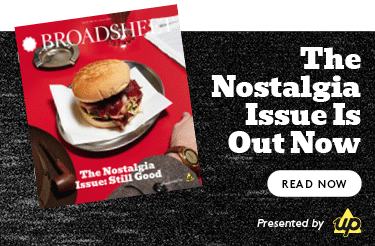Walk into most bars in Australia and there’ll be several brands of tequila. You’ll probably also find mezcal, tequila’s smokier cousin. But you’d be forgiven for not knowing the third link in the family tree of agave-based spirits: raicilla’s legacy has only recently been revived – even in Mexico.
Adelaide-born Rio Chenery is half Mexican and half Australian, and his grandfather invariably made sure there were bottles of raicilla in the house.
“My family have always had a strong appreciation for raicilla,” he says. “It came from my grandad, who I never met, but he was working in Mexico and used to travel a lot. One of his trips was through [the Mexican state of] Jalisco, and the mountain ranges there. He tried raicilla and he loved it. After that, he’d buy bottles and bring them back home, so we always had bottles lying around.
“My mum lives in Jalisco, which is in the raicilla region. When I was visiting [three years ago], I started going up into the mountains and talking to people who made it,” he says. “I eventually found an old distillery here and said, ‘Fuck it. Let’s do it. Let’s make raicilla.’”
Chenery now lives in Sayulita, on the Mexican coast. His distillery is in La Estancia de Landeros, about one kilometre above sea level in the Jalisco foothills.
Chenery’s raicilla, Estancia, is in bars and restaurants across Australia. You’ll find it at Mamasita and Bodega Underground in Melbourne, and Bulletin Place, Tio’s Cerveceria, Shady Pines Saloon and Longrain in Sydney. It’s stocked across all Beach Burrito locations, and bottles can also be bought online.
“Even in Mexico City, raicilla is starting to get appreciation off the back of mezcal,” he says, referring to the spike in popularity of mezcal the world over. “Raicilla is the next big thing, and there are a lot of people who are trying to move onto it. But even here, there’s still not a huge amount of knowledge.”
While raicilla is experiencing something of a renaissance in Mexico, it has traditionally had a reputation as the country’s version of moonshine – originally produced in secret during Spanish colonial rule by peasants who couldn’t afford highly taxed wine.
“Even 10 years ago, you’d get raicilla in a plastic Coke bottle on the side of the road, and it would really mess you up,” Chenery says. “It was like rocket fuel. That is, in part, because many of the producers were just family distillers, and they never made the effort to learn how to cut out the bad properties. Now there’s a raicilla council – just like the tequila and mezcal councils – that regulates all of the elements to ensure it’s a quality product.
As with wine and terroir, the location of a distillery is crucial in raicilla production – the landscape ultimately determines the flavour of the end product.
“Our distillery is located in the Sierra Madre region, so it’s very mountainous,” Chenery explains. “The main trees that grow here are oak and pine, and there’s a lot of agriculture. It’s a very fertile region.
“Our property has coffee trees, as well as a lot of strange trees like pomelo, plum, mango, avocado and banana … When you’re doing wild fermentation [part of the process of making raicilla], all of those things play a role, because the yeast is a product of its environment – the environment impacts the overall flavour.”
Although mezcal, tequila and raicilla all start in the same place – with the agave fruit (though each one uses different types. For example, tequila uses only blue agave) – it’s largely the method of cooking that distinguishes them. Agave used for mezcal is usually cooked in a pit oven – a big hole in the ground with a fire lit at the bottom, into which agave is loaded before being covered in dirt and leaves. This subterranean cooking process is what gives the spirit its smoky flavour profile.
Raicilla is produced in a similar way to how tequila was produced hundreds of years ago. While nowadays for tequila agave is cooked in a flameless pressure cooker (called an autoclave), the cooker used for raicilla more closely resembles an above-ground pizza oven, which combines elements of both tequila and mezcal production.
“We heat the oven with oak wood over eight hours, then load the agave in and seal it. It’s like a pressure cooker with mud,” Chenery explains. “The wood and coal give the agave roasted characteristics, more like an oven. You get some of the steam – like in tequila – and some of the smoky characteristics of mezcal, but not as much. Our agave grows under pine trees and oak trees about 6500 feet above the ground, so it also takes on the characteristics of these. It has this pine-y-ness that comes through, and has some botanical elements, similar to gin.”
The resulting spirit is somewhere between tequila and mezcal – there’s a clear smokiness, but it’s more subtle than in mezcal. Chenery also believes raicilla is smoother to drink than tequila.
Chenery says he usually drinks it on the rocks in summer but that, out of the agave-drinks family, raicilla is the spirit perhaps best suited to cocktails because it doesn’t have an overpowering flavour.
“It can go both ways; it can be used for a spirit-forward cocktail like an Old Fashioned, or a tropical cocktail, like a Daiquiri. I’ve used it as a replacement for gin, for bourbon … It’s very versatile, whereas mezcal, like bacon, has to be the dominant flavour. Same with tequila, which has more of an earthy flavour that generally comes through when you mix it.
“Raicilla doesn’t have that.”
Estancia raicilla can be purchased through BoozeBud. More information on stockists and suppliers available through Bebidas, the Australian importer for Estancia.
























